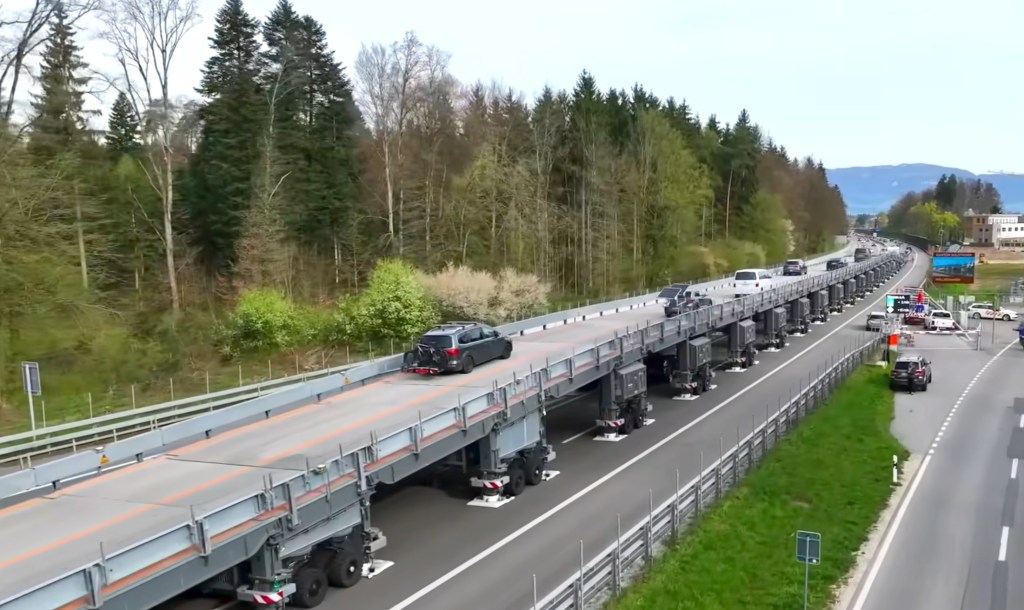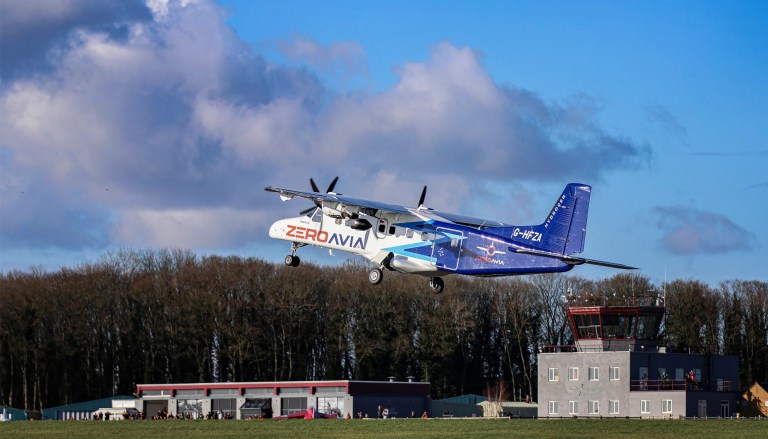Roadwork feels a bit like a necessary evil: Streets need to be in good condition so we can drive safely, but getting stuck in traffic because a stretch of highway is closed for maintenance can be maddening. In Switzerland, engineers have addressed this issue by developing an innovative mobile bridge that enables cars to drive over it while repairs are being done below.
Called the ASTRA Bridge and commissioned by the Swiss Federal Roads Office, the first-of-its-kind structure is about 843 feet long by 25 feet wide, and stands at a little over 15 feet tall. At 1,250 metric tons, it’s a massive beast, but can be set up over one weekend.
“The whole concept had to be designed in such a way that the assembly of the entire bridge on the motorway building site could be carried out in two consecutive nights,” Toni Hauert, head of special vehicles at Marti Technik AG, a construction company involved in the development, said in a statement.
ASTRA is equipped with a remote-controlled hydraulic unit that allows it to be raised 10 centimeters at a time in 328-foot stretches, so workers can repair the highway beneath and then move along to raise the next section. Once put together, the entire modular bridge can be controlled via one device, as all of its 22 power packs are connected to each other.

“This makes it possible to move, steer, and stop this huge unit with just one radio remote control,” said Joachim Kolb, sales manager at Cometto, a transportation manufacturing company that worked on the bridge.
With two lanes and a speed limit of 37 miles per hour, the bridge does create some slowing down of highway traffic, but it prevents the total closure of a highway and the redirection of traffic onto surface streets. Most importantly, though, it increases the safety of workers who’d otherwise be working alongside fast-moving cars.
“The hazard potential for the construction workers involved has been lowered enormously,” stressed Project Manager Jürg Merian, “because the traffic no longer has to drive by them.”
Besides protecting workers from cars zipping by, the bridge provides shelter from rain and sun, making for fewer interruptions due to inclement weather.
It’s currently being employed on Switzerland’s A1, a 254-mile highway that stretches east from Geneva to the village of St. Margrethen near the Austrian border.

Still relatively in its infancy — it was first piloted in 2022 and then tweaked to help improve the flow of traffic over it — the technology isn’t entirely without issues. The Swiss government website contains bulletins about the structure’s status, and multiple report instances of it malfunctioning and requiring repair.
The bridge will hopefully continue to improve, however, and perhaps inspire similar technology in other parts of the world as well. Per Cometto, inquiries have already been fielded from Japan and the Netherlands.











